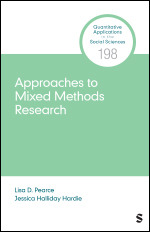Series Editor Introduction
Acknowledgments
About the Authors
Chapter 1: What Is Mixed Methods Research and Why Use It?
The Field of Mixed Methods Research
Clarifying Some Terminology
Chapter 2: Developing Research Questions and Hypotheses in Mixed Methods Research
Predetermined Research Questions or Hypotheses for Mixed Methods Research
Emergent Research Questions or Hypotheses in Mixed Methods Research
Chapter 3: Sampling and Case Selection
Sampling in Concurrently Designed and Collected Mixed Methods Projects
Sequential Sampling in Mixed Methods Projects
Chapter 4: Combining Methods to Improve Data Collection Tools
Improving Quantitative Data Collections With Findings From Qualitative Data
Results From Quantitative Data Informing the Collection of Qualitative Data
Hybrid Data Collection Tools
Chapter 5: Integrating Quantitative and Qualitative Data in Analysis and Interpretation
Rationale for Mixing Data Analyses
The Process of Integrating Different Data Analyses
Chapter 6: Challenges and Rewards in Mixed Methods Research
Common Issues in Mixed Methods Research
When to Use a Mixed Methods Approach (or Not)
Rewards of a Mixed Methods Approach
Appendix: Mixed Method Studies by Chapter
References

 Sage College Publishing
Sage College Publishing




